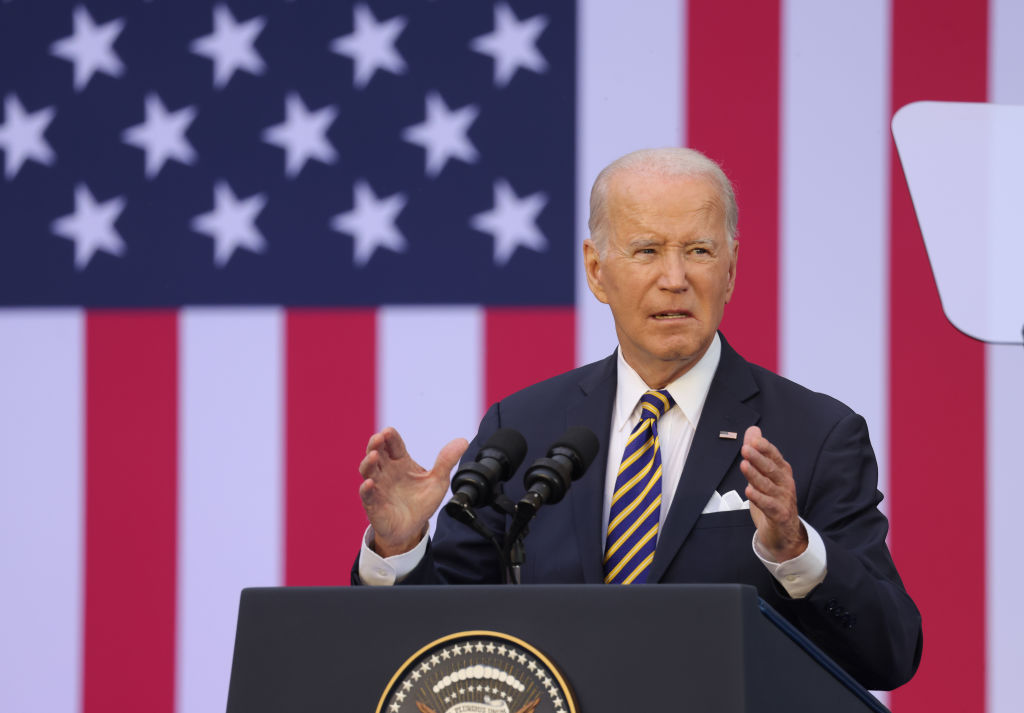- The Environmental Protection Agency (EPA) announced historically strict vehicle tailpipe emissions limits in April, which the agency projects will contribute to approximately two-thirds of all light-duty vehicles going electric after 2032 and nearly half of medium-duty vehicles by 2032
- The standards could be found unconstitutional in light of the Supreme Court’s embrace of the “major questions doctrine,” the idea that agencies must have explicit authority granted by Congress to regulate major policy issues, experts told the Daily Caller News Foundation.
- “They’re effectively forcing manufacturers to produce electric vehicles for the first time,” Competitive Enterprise Institute Attorney Devin Watkins told the DCNF.
The Biden administration’s new vehicle emissions plan, which is intended to accelerate the transition to electric vehicles, could be found unconstitutional in light of the Supreme Court’s embrace of the major questions doctrine, experts told the Daily Caller News Foundation.
The Environmental Protection Agency (EPA) announced historically strict vehicle tailpipe emissions limits in April that the agency projects will contribute to approximately two-thirds of all light-duty vehicles going electric after 2032 and nearly half of medium-duty vehicles by 2032. The rule could conflict with the major questions doctrine, the idea that agencies must have explicit authority granted by Congress to regulate major policy issues, legal experts told the DCNF.
The Supreme Court has embraced the major questions doctrine in recent decisions, including last year in West Virginia v. EPA, which found the EPA’s emissions standards for fossil-fuel power plants exceeded agency authority, and in its rulingagainst Biden’s student loan forgiveness plan in Biden v. Nebraska, which found the Secretary of Education did not have congressional authorization for the program.
Texas Public Policy Foundation Senior Attorney Ted Hadzi-Antich told the DCNF the Supreme Court’s ruling in West Virginia v. EPA indicates that the new vehicle emission standards, like the emissions standards for fossil-fuel power plants, likely overstep the EPA’s authority.
“What the court said is that [the power plant standard] was basically not an emissions standard, which is ok under the Clean Air Act, but it was essentially a regulation that required a switch from fossil fuels to renewable energy sources,” he explained. “The court said that it was a major question that had not yet been addressed under the Clean Air Act.”
Similarly, Hadzi-Antich said the new vehicle emissions rules require manufacturers to “manufacture certain types of cars, regardless of whether the market dictates it or not.” The Clean Air Act, which authorizes the EPA to establish emission standards, doesn’t grant the EPA that kind of “broad, regulatory authority over the national economy,” he continued.
“The Biden Administration will lose in the US Supreme Court,” Paul J. Larkin, senior legal research fellow in the Heritage Foundation’s Meese Center for Legal and Judicial Studies, told the DCNF. “The Clean Air Act empowers the government to require that manufacturers use the ‘best available technology’ for gasoline or diesel powered motor vehicles. The CAA does not empower the [government] to demand that people use electric vehicles—or horses, for that matter—just because they have lower emission levels.”
The EPA’s new emissions rule, which applies to vehicles between model years 2027 through 2032, builds on an earlier rule for vehicles between model years 2023 through 2026, which the Competitive Enterprise Institute is already fightingin court using the major questions doctrine.
“On the merits, EPA argues that its standards do not present a major question,” CEI wrote in its brief filed with the District of Columbia Court of Appeals. “The rule’s $300-billion price tag, political significance, and societal impact indicate otherwise.”
“This is one of the most expensive regulations ever issued by the federal government,” CEI Attorney Devin Watkins told the DCNF, referring to the earlier rule.
“They’re effectively forcing manufacturers to produce electric vehicles for the first time,” Watkins said, noting the new standards pose similar “expansion of agency authority” problems.
After the new standards were announced, Republican West Virginia Attorney General Patrick Morrisey raised a similar concern about the EPA overstepping its role.
“Again, the EPA, an agency comprised of unelected bureaucrats, is attempting to circumvent Congress,” Morrisey said in an April statement. “The Supreme Court clearly stated EPA must regulate within the express boundaries of the statute that Congress passed.”
Morrisey, along with Republican Kentucky Attorney General Daniel Cameron, led a group of 25 state attorneys general in opposing the plan in a July 5 comment.
“[T]he Proposed Rule’s too-aggressive shift to electric vehicles (‘EVs’) is unlawful and misguided,” they wrote. “While billed as tightening existing standards for ‘criteria pollutant and greenhouse gas (GHG) emissions from’ certain motor vehicles…the Proposed Rule is, more accurately, the next phase in a top-to-bottom attempt to restructure the automobile industry. Congress did not give EPA that power.”
The White House did not immediately respond to the DCNF’s request for comment.
All content created by the Daily Caller News Foundation, an independent and nonpartisan newswire service, is available without charge to any legitimate news publisher that can provide a large audience. All republished articles must include our logo, our reporter’s byline and their DCNF affiliation. For any questions about our guidelines or partnering with us, please contact [email protected].
All content created by the Daily Caller News Foundation, an independent and nonpartisan newswire service, is available without charge to any legitimate news publisher that can provide a large audience. All republished articles must include our logo, our reporter’s byline and their DCNF affiliation. For any questions about our guidelines or partnering with us, please contact [email protected].
















 Continue with Google
Continue with Google